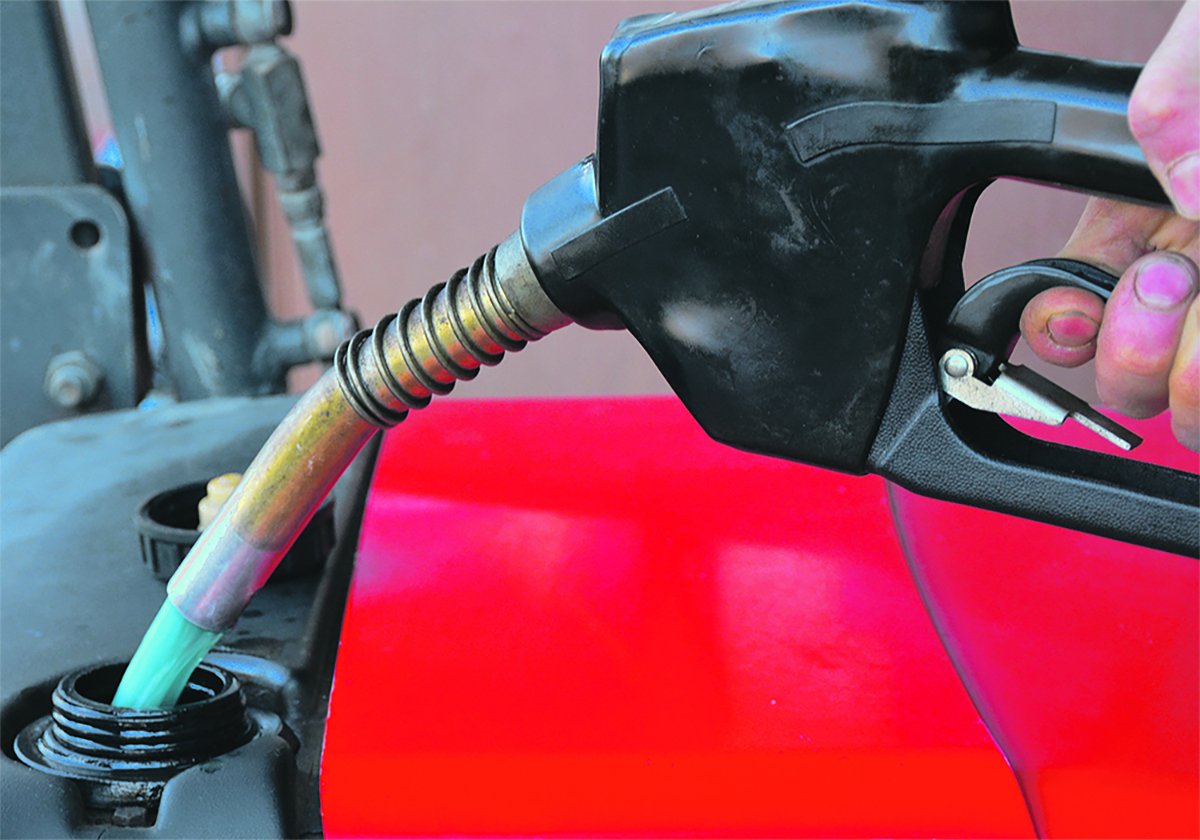United Grain Growers emerged from the stormy seas of the 1998-99 crop year damaged, but still afloat.
The grain company posted a net profit of $3.78 million, well down from 1997-98’s $16.33 million.
But in a year of reduced grain exports and a poor farm economy, the company performed better than the industry average, said its chief executive officer, Brian Hayward.
“We made the best out of a very difficult situation. The fact of the matter is, a lot of the reason for what’s happened is really due to things we have little or no control over.”
Read Also

Alberta may eliminate marked fuel
Alberta may soon stop selling dyed gasoline and diesel.
Dismal foreign markets resulted in the Canadian Wheat Board exporting far less grain than the year before. UGG’s shipments of CWB grains were down 22 percent.
Also, record low hog prices hurt performance at the company’s feed and swine genetics operations. Belt tightening on the farm caused the market for some crop input groups to shrink.
Nevertheless, the company’s earnings before depreciation, interest and taxes, a key financial performance indicator, were $42.4 million, down 30 percent from last year but still the third highest in company history.
Cash flow from operations, down 17 percent to $29.9 million, was also the third best on record. Cash flow per share was $1.72 versus $2.08 last year.
Hayward said while industry-wide country grain shipments were down 12 percent, UGG’s volume shrank by 10.7 percent. At port, the company’s handlings were down by only 1.6 percent compared to an industry-wide drop of 20 percent.
One reason for the performance was its relationship with end users, such as ADM’s part ownership in UGG.
“Very high profile is our relationship with ADM from a customer viewpoint, but there are other end users that we tried our level best to provide excellent service to,” he said.
Elevator modernization also helped the company, as did its business execution.
“There has been a very limited number of glitches in terms of how we move grain through our internal pipeline.”
With the grain handling side of the business awash, crop production services helped keep the ship afloat.
Farm supplies
For the first time in the company’s 93-year history, farm supplies were the biggest money maker, posting a profit of $16.6 million on revenue of $74.4 million, compared to grain handling profit of $14.2 million on revenue of $93.4 million.
With better prospects for exports in 2000, grain handling might resume its primary position, but pesticide services will continue to grow in importance to the company, Hayward said.
In the early 1990s, about 70 percent of UGG’s operating income came from grain operations. Since then, UGG has built up seed sales through Proven Seeds and increased fertilizer and crop input sales. After it went public in the mid 1990s it had the resources to begin buying independent farm supply companies and invest in its feed and livestock supply business.
“So the percentage of operating income from grain has dropped and in 1998, for the first time ever, grain was less than 50 percent of the company’s operating income, and that was a year when we were hitting on all cylinders right across the board.”
Livestock services posted operating income of $5.1 million on revenue of $30.2 million compared to $7.2 million on revenue of $31.3 million last year.
Farm business communications had income of $1.2 million on revenue of $9.3 million compared to income of $1.6 million on revenue of $9.3 million last year.
While 1998-99 was a difficult year, the company spent the most ever on capital improvements and acquisitions. It spent $91 million on elevator construction, feed mill upgrades and acquiring farm input supply companies.
“Our business plan, regardless of (last year’s) results, did not envision the same level of capital expenditure in fiscal 2000.”
Hayward expects the company to spend about $60 million, similar to the amount spent in 1997-98. He said commodity markets appear to have hit bottom and prospects for the 1999 prairie harvest is better than average, two signs that fiscal 2000 will provide calmer waters.














